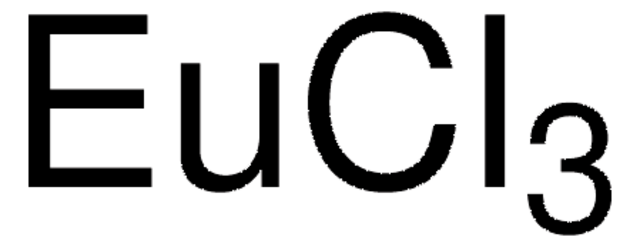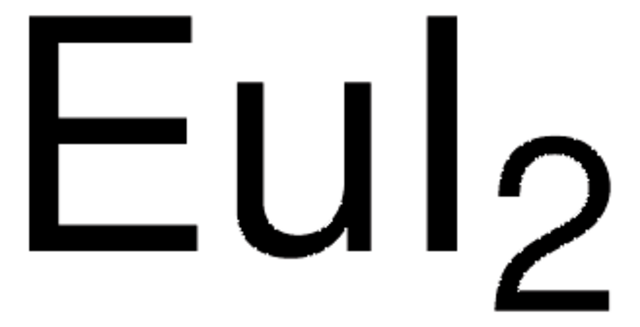431850
Europium(II) chloride
99.99% trace metals basis
Synonym(s):
Dichloroeuropium, Europium chloride, Europous chloride
About This Item
Recommended Products
grade
for analytical purposes
Quality Level
Assay
99.99% trace metals basis
form
powder and chunks
reaction suitability
reagent type: catalyst
core: europium
impurities
<0.1% Zn
SMILES string
Cl[Eu]Cl
InChI
1S/2ClH.Eu/h2*1H;/q;;+2/p-2
InChI key
BMANZYKPCBPZFG-UHFFFAOYSA-L
General description
Application
- A dopant to prepare phosphor materials for energy-efficient solid-state lighting.
- A pressure-sensor material.
- A suitable precursor for the synthesis of Europium(ii) compounds coordination polymers with 2,2′-bipyrimidine-mediated ferromagnetic interactions.
accessory
Storage Class Code
11 - Combustible Solids
WGK
WGK 3
Flash Point(F)
Not applicable
Flash Point(C)
Not applicable
Personal Protective Equipment
Choose from one of the most recent versions:
Already Own This Product?
Find documentation for the products that you have recently purchased in the Document Library.
Articles
The prevailing strategies for heat and electric-power production that rely on fossil and fission fuels are having a negative impact on the environment and on our living conditions.
The rare earth elements impact nearly everyone in the world. All of the people living in advanced technological countries and almost all those living in third world countries utilize the rare earths in their everyday living—the car that one drives (gasoline is refined from oil using rare earth catalysts and catalytic converters reduce the polluting emissions from the automotive exhaust), watching the news on TV (the red and green colors in TV screens), the telephones and computers we use to communicate (the permanent magnets in speakers and disc drives), just to name a few examples.
Our team of scientists has experience in all areas of research including Life Science, Material Science, Chemical Synthesis, Chromatography, Analytical and many others.
Contact Technical Service





